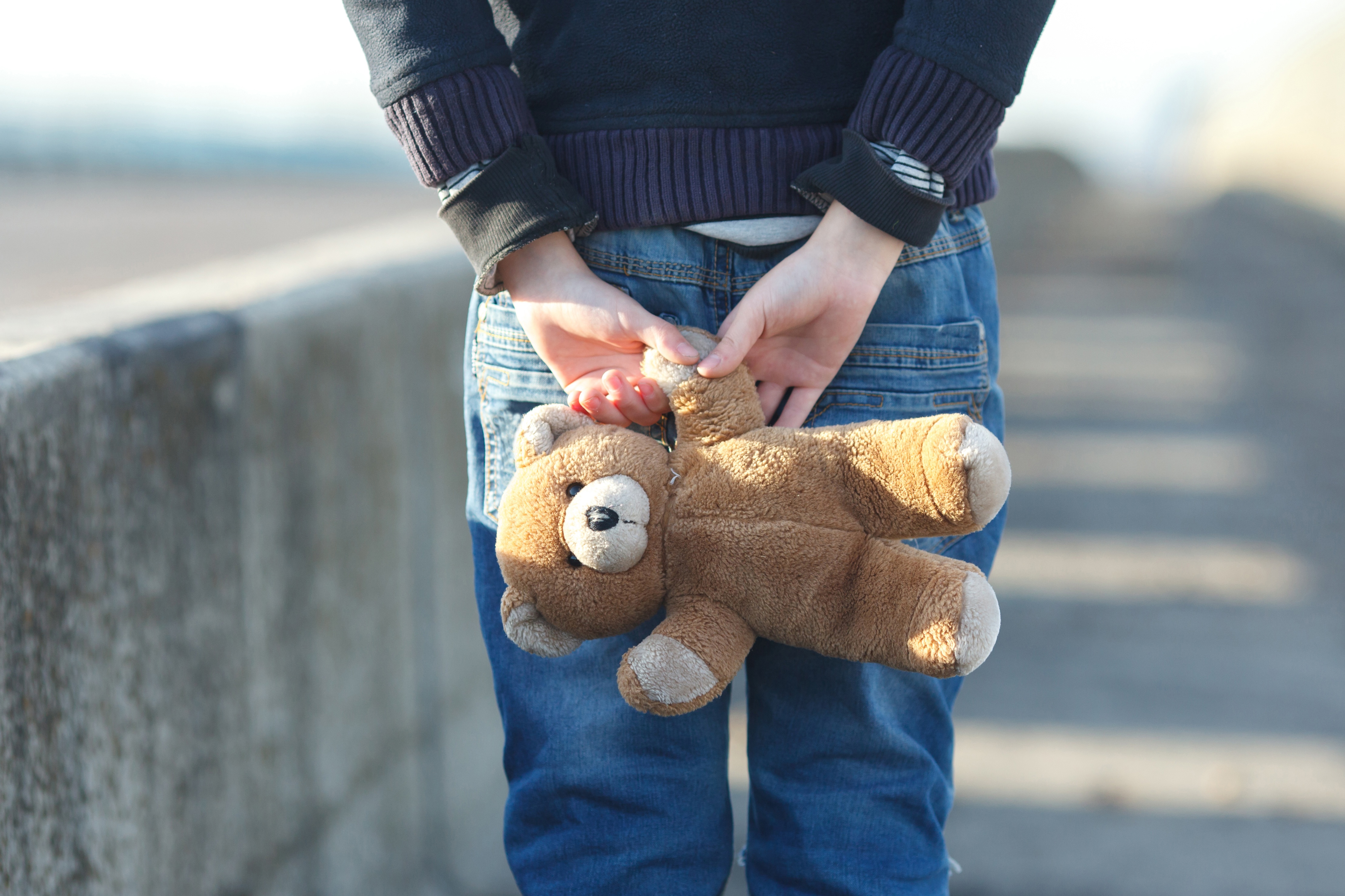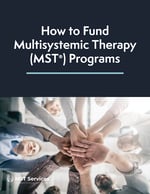Violence Among Youth Is More Than Meets The Eye
Across the world, over 200,0001 youth die every year due to homicide. That’s the fourth-leading cause of death for those ages 10-29, representing 43% of all murders in the world; in the United States itself, homicide is the third-leading killer of young people. But these shocking numbers can’t reflect the true dangers of youth violence—from sexual violence to gang violence to non-fatal violence, aggressive acts inflicted by or on juveniles can have a lifelong impact on their social, psychological and physical health.
Often, youth violence is conceived of as dangerous youth acting aggressively—young people with behavioral disorders, those disconnected from their families and experiencing high levels of community violence are at highest risk of committing violent acts. But these vulnerable juveniles are often the unseen victims of violence themselves: almost 100% of high school students in urban settings report knowing a victim of a violent crime, and 88% have witnessed an assault first-hand.2 Across the U.S., 68% of youth ages 14-17 report observing some sort of violence in their lives3, whether that be fights at school or domestic violence at home. Witnessing or experiencing an attack can be a traumatic event for a young person, leading to long-term health complications and even a higher likelihood of engaging in violence oneself. To talk about youth violence, then, we must discuss not only internal risk
Domestic Violence
On average, an American is abused by his or her intimate partner every 20 minutes.4 More than 20,000 calls to domestic violence hotlines are placed per day, and 1 in 4 American women will experience violence from a partner in their lifetime. Domestic violence— a type of physical or emotional abuse that takes place between intimate partners, family members or other close relatives— is not only dangerous for adults in abusive partnerships. This type of violence can stir a self-perpetuating cycle of harm, traumatically and irrevocably impacting children in abusive homes.
Over five million children are witness to acts of domestic violence every year.5 Whether this is between parents, siblings or other members of the household, exposure to violence at a young age can have myriad negative consequences. Youth who witness domestic violence are more likely to commit violent crimes against
It’s clear that addressing juvenile violence goes beyond enrolling youth in psychological treatment or directing them to guidance counselors— the actions of caretakers and the home environment play a major role in the health and behavior of young people. Juvenile justice reformers and researchers alike know that the most effective interventions for youth displaying violent behavior are treatments that work concurrently with families and children, addressing mental health or behavioral problems for both caretakers and youth. Successful interventions can create safe and supportive home environments for youth, decreasing their risk of lashing out violently while providing them a positive social network to prevent feelings of isolation. When treatment programs view violence among youth as a product of complex circumstances, like domestic violence, rather than internal failure, they have a better opportunity to support productive, healthy home-building with caretakers and juveniles alike.
Anti-social Behavior
When young students begin to exhibit behavioral issues, there are many different names for it. They may be described as Emotionally Disturbed (ED)—a classification applied to just over 2% of American youth—or, more often, Learning Disabled (LD).8 Many juveniles are diagnosed with a conduct disorder or oppositional defiant disorders, two terms used often by school psychologists. But whatever the phrase, youth referred to educational administrators or therapists are generally displaying similar behavior: they break rules, display hostility towards authority figures and defy more often than their peers. These tendencies can lead to aggressiveness, anger
Youth displaying anti-social behavior typically begin doing so during adolescence or their early teenage years.9 Anti-social actions tend to be insignificant at first—defying a teacher, lying to authority figures or displaying aggression towards peers—but can grow as a young
Though incarcerating youth who exhibit violent behavior can seem like the best way to protect those around him or her, in reality removing children from their home can spawn, rather than break, patterns of anger and aggression. Within detention centers, juveniles are often exposed to dialogue extolling violence and crime from those around them; in other cases, youth are even subject to direct violence from peers or facility officers.10 These influences can increase youth isolation and aggression, raising the likelihood of youth lashing out in violent ways. Even among adults, incarceration isn’t healthy: youth with parents in prisons or jails have a higher rate of conduct disorders and more criminal offending than their peers, suggesting that even exposure to secondhand violence can contribute to the development of anti-social tendencies.11 Limiting traumatic and potentially violent experiences for at-risk youth— rather than instituting strict out-of-home punishments for those who demonstrate oppositional behavior— gives youth with conduct disorders the best chance at disassociation from violence.
Youth Gang Violence

While youth anti-social behavior can be dangerous on its own, in a gang—defined as “a group of persons working to unlawful or anti-social ends”—aggressive tendencies can easily manifest themselves in violent or even deadly acts. Gang members are much more likely12 than non-members to engage in serious crime, like homicides, armed robberies
Youth often begin their involvement in gangs at the behest of close friends and family. Research shows that having siblings who are gang-affiliated can exert pressure on youth to join the group as well, and living with at least one gang member is a powerful predictor of youth involvement.14 This type of pro-gang influence from a juvenile’s home ecosystem extends to peers as well: youth who are “peripheral” to gang members, meaning they’re friends with gang-affiliated students, are more likely to demonstrate violent, anti-social behavior than teenagers who are not peripheral. Even without direct connections to a gang, involvement with any community of violent peers can raise the risk of dangerous behavior among youth. The allure of gangs for young people can also manifest itself as a feeling of “belonging” to a larger group—this can be a particularly strong attraction for youth who feel isolated from their family, school or community.
But gang membership can send juveniles down a dangerous, traumatic and often criminal path. In large cities of 100,000 residents or more, over two-thirds of violent juvenile crime is committed by gang-affiliated youth.15 What’s more, upon joining, many gangs require youth to participate in violent initiation acts; whether as the victim of violence or the perpetrator, these acts can have lifelong negative mental health consequences for juveniles forced to engage in them. Continuous exposure to violence, drugs
Violence in Juvenile Detention Centers
In 2014, a new juvenile detention center in New Orleans opened— according to city officials, the Youth Study Center would be dedicated to providing for the health and educational needs of its young residents. Instead, like many detention centers across the nation, New Orleans’ Youth Study Center is overcrowded, understaffed and dangerous for juveniles.16 In just one week, the Center experienced four suicide attempts and many violent fights between youth; it often exceeds its capacity of 48 beds, even housing up to 56 young people at one time. Because the detention center does not have enough counselors to see all its juvenile residents, many serious mental health issues go untreated and even undiagnosed—what’s more, discipline like forced isolation and forbidding family visits can worsen these mental health issues to the point of danger.
Unfortunately, these problems are not limited to New Orleans’ Youth Study Center—youth detention centers across the nation are plagued by violence, overcrowding and lack of rehabilitative resources for youth. Research shows that youth who are sentenced to detention centers display higher rates of mental illness and childhood trauma than their peers; however, most psychologists agree that detention itself is a traumatic experience for youth, adding further damage to the psyche of a young person.17 Being locked away from one’s family and community can lead to toxic stress levels—hindering a young brain’s development and its ability to perform in school—and catalyze future mental, behavioral and physical illness. While youth respond to trauma in different ways, some may lash out aggressively or violently while incarcerated— this may actually increase their time spent in detention, creating a cycle of trauma and conduct disorders. Though detention centers are required to offer basic mental and physical health services, many of them are too thinly resourced and understaffed to provide the full support many incarcerated youth need. This contributes to high levels of juvenile recidivism after incarceration—in some states, rates of rearrest are over 80% within 3 years of release.18
Living away from home in a detention center is not only a traumatic experience for
Child Sexual Abuse and Trauma

One of the most confusing, violent and traumatic experiences a child can face is becoming the victim of sexual assault. Though often conceived of as physical acts, child sexual abuse can take many forms, including obscene online interactions and any type of pornography featuring minors. Perpetrators of this type of abuse are overwhelming male—and victims are overwhelming female—yet sexual abuse can happen to any young person, particularly vulnerable youth.20 About 23% of offenders are juveniles themselves, and often, the victims of sexual assault and abuse know their attackers—in fact, over a quarter of child victims are abused by their immediate family, and 60% are abused by someone within their close social circle. Because experiencing sexual assault can be culturally shame-inducing, many children and youth choose not to report the incident or seek treatment— this can lead to harmful consequences like PTSD, mental health problems and even physical illness.
Another prolific type of child sexual abuse is sex trafficking, a shadowy, violent industry worth over $32 billion annually across the globe. In the U.S. alone, 300,000 children per year are victimized by child sex traffickers, and many have been previously abused and assaulted.21 Today, it’s common for traffickers to reach out to youth online and lure them to run away from their homes— the most vulnerable young people are those who feel disconnected from their families and communities, who may find that traffickers are offering them homes and a place to feel safe. Yet the world of child sex trafficking is violent and traumatic, where juveniles are often forced to take drugs, locked in houses and victimized by many older adults. Many young victims are dissuaded from reporting their offenders, as thirty-one states in the U.S. still charge juveniles with prostitution; in fact, up to 1000 children per year are arrested under these laws.22 But sending victims of child sex trafficking— and other sexually victimized youth— to juvenile detention centers may be antithetical to their recovery and health needs.
In 2015, the Bureau of Justice ran a large survey of both youth and adult prison populations; according to self-reports, about 10% of youth in detention facilities have been sexually abused while in detention, much higher than the rates of abuse in adult facilities. Just under half of these reports include staff-on-youth abuse—these are concentrated in the most understaffed detention centers that face high levels of violence. Even before incarceration, sexual victimization during childhood can catalyze isolation, the development of mental health disorders, substance abuse problems and even physical health complications— these can lead to behavioral struggles, making it more likely a youth will be detained. In fact, an astounding 73% of girls in juvenile detention centers have a history of physical or sexual abuse. Child victims of sexual abuse need trauma-informed, individualized treatment programs— resources that detention centers often cannot provide. Addressing a young person’s experiences with sexual abuse during comprehensive, in-home treatment rather than detention is the most effective way to ensure that youth are not re-victimized and can safely begin their recovery.
Funding Troubled Youth Programs
The MST approach to putting troubled youth on the right path has been shown to be extremely effective in terms of its success rate, decrease in crime and keeping down costs. The question becomes how can communities and organizations pay for MST programs? Here are four steps that should be considered:
- Assess whether your community needs an MST program.
- Determine what funding is available.
- Set up sustainable funding that will be in place for years.
- Focus on long-term strategies.

Contact Us
Interested in starting an MST program in your area?
Fill out the form below and someone will contact you shortly.
Sources:
1 http://www.who.int/news-room/fact-sheets/detail/youth-violence
2 https://www.cdc.gov/nchs/data/nvsr/nvsr66/nvsr66_05.pdf
3 https://www.childtrends.org/indicators/childrens-exposure-to-violence
4 https://ncadv.org/statistics
5 https://cdv.org/2014/02/10-startling-domestic-violence-statistics-for-children/
6 https://www.childwelfare.gov/pubPDFs/witnessdv.pdf
7 http://stars.library.ucf.edu/etd/6043/
8https://www.researchgate.net/publication/232483989_The_Etiology_of_Youth_Antisocial_Behavior_Delinquency_and_Violence_and_a_Public_Health_Approach_to_Prevention
9https://www.ncbi.nlm.nih.gov/pmc/articles/PMC3715613/
10https://www.npr.org/2014/10/15/356165968/culture-of-violence-pervades-rikers-juvenile-facilities?t=1538040415825
11https://www.tandfonline.com/doi/pdf/10.1080/10509674.2014.887606
12https://www.nij.gov/topics/crime/gangs/Pages/welcome.aspx
13https://www.fbi.gov/news/stories/report-from-chicago
14https://www.ncbi.nlm.nih.gov/pmc/articles/PMC4036700/
15https://www.nationalgangcenter.gov/About/FAQ
16 https://www.nola.com/crime/index.ssf/2018/08/youth_study_center_jail_new_or.html
17 https://jjie.org/2015/05/21/juvenile-detention-centers-on-the-other-side-of-lock-em-up-but-not-quite-trauma-informed/
18 https://csgjusticecenter.org/youth/reducing-juvenile-recidivism/
19 https://www.propublica.org/article/rape-and-other-sexual-violence-prevalent-in-juvenile-justice-system
20 http://victimsofcrime.org/media/reporting-on-child-sexual-abuse/statistics-on-perpetrators-of-csa
21 https://www.huffingtonpost.com/entry/the-shocking-truth-of-child-sex-trafficking_us_582de812e4b0eaa5f14d417d
22 http://rights4girls.org/issue-areas/?issue=trafficking-of-girls
